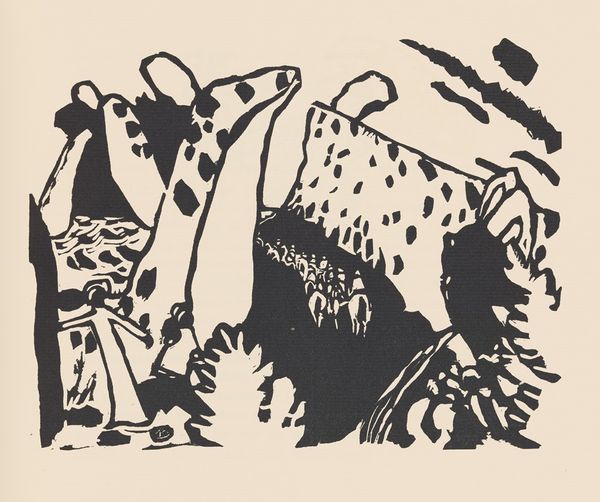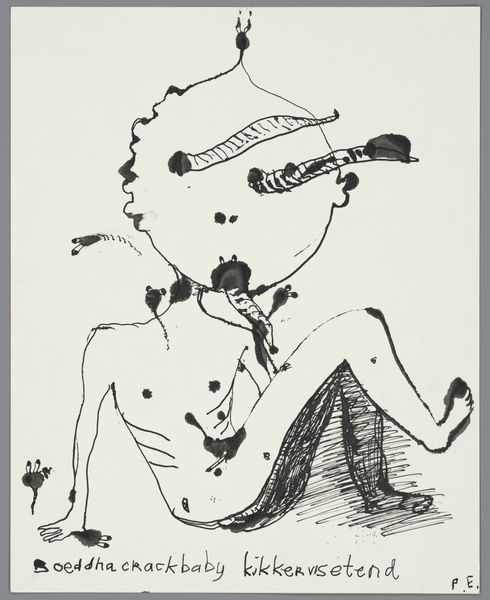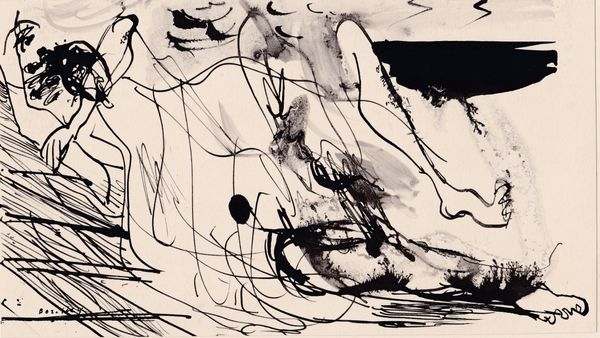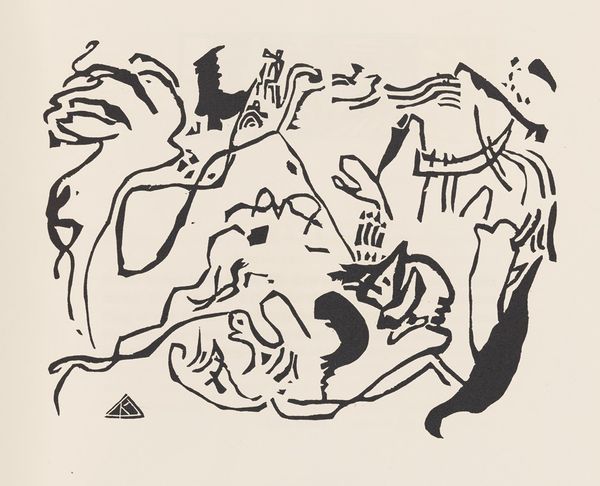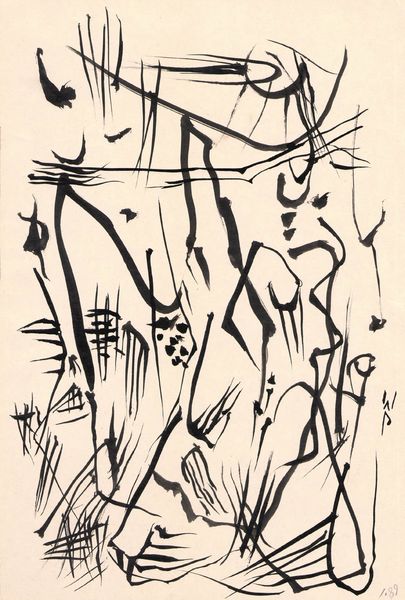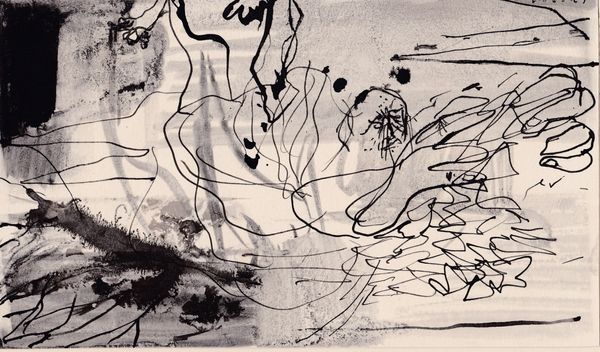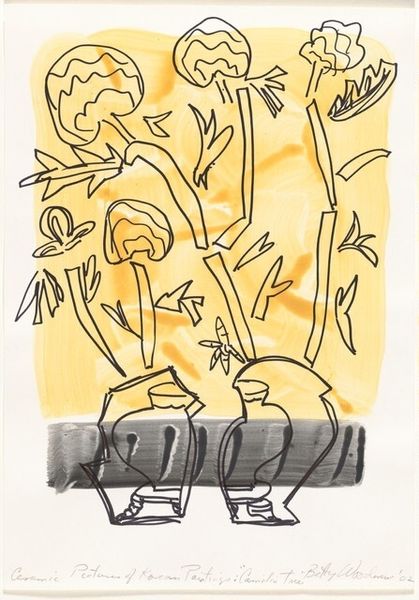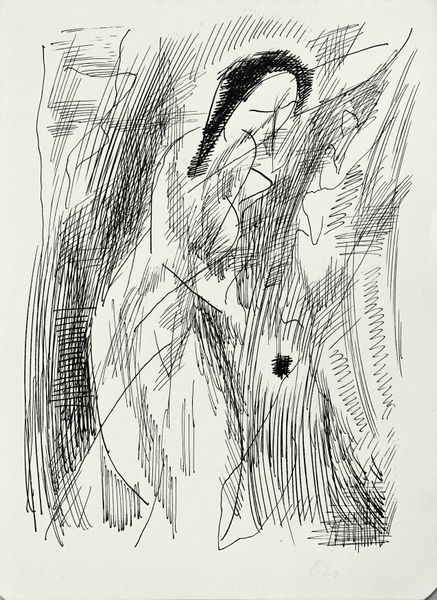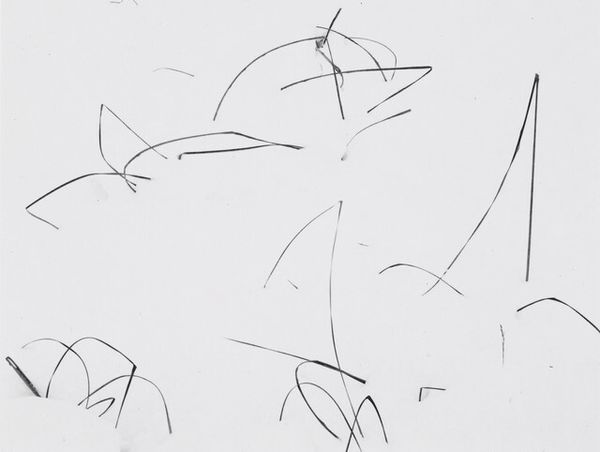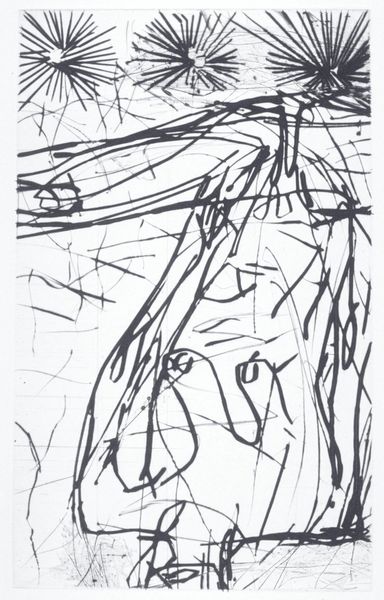
drawing, paper, ink
#
drawing
#
art-nouveau
#
paper
#
abstract
#
ink
#
geometric
#
expressionism
#
line
#
early-renaissance
#
line illustration
#
modernism
Copyright: Public Domain: Artvee
Curator: Wassily Kandinsky's "Kläge Pl.02," created in 1913 using ink on paper, offers a fascinating case study in abstraction. The stark black lines against the beige backdrop create an immediate graphic tension. What is your first take? Editor: It's certainly… energetic. Almost chaotic. There’s a visual jumble – an overwhelming sense of disjointed shapes floating without anchor. The materiality is simple, yet the effect is deliberately jarring. I see an unsettling tension in what could have been just simple ink and paper. Curator: I think understanding Kandinsky’s engagement with the "Der Blaue Reiter" group is crucial here. He was deeply invested in the spiritual in art, seeking to express inner emotions through pure abstraction. The production of this drawing, its seeming spontaneity, challenges established artistic conventions of the time. How does this departure get legitimized, what mechanisms come to bear? Editor: Agreed. Seeing this piece within that context helps. But consider also the role that galleries and collectors played. His turn to abstraction also shifted the kind of artistic labor being valued, and whom. Did this redefinition broaden or further restrict access and power within the art world? The institutional backing was pivotal to shaping the way viewers, then and now, interact with these images. Curator: Precisely. It wasn't simply about Kandinsky's individual expression but how institutions chose to present and interpret his process. The value we ascribe now wasn't inherent in the ink or paper itself but built up through historical narrative, critical analysis and subsequent market valuations. He broke with representational conventions to make these. Editor: And how the reproduction of the drawing itself democratized his vision, didn't it? The lithograph form, itself, enabled broader distribution, challenging the aura of the unique, original work, by making it more broadly accessible. Yet its market value has continued to soar, paradoxically. Curator: It’s a powerful paradox, revealing so much about the relationship between art, commerce, and ideology, wouldn't you say? A print designed to communicate, valued primarily now as high art, not as a social tool. Editor: Absolutely. The piece makes me consider the complex dance between artist intention, socio-political factors and the continuing impact that historical forces have in defining and shaping artistic creation. The conversation lives on.
Comments
No comments
Be the first to comment and join the conversation on the ultimate creative platform.
